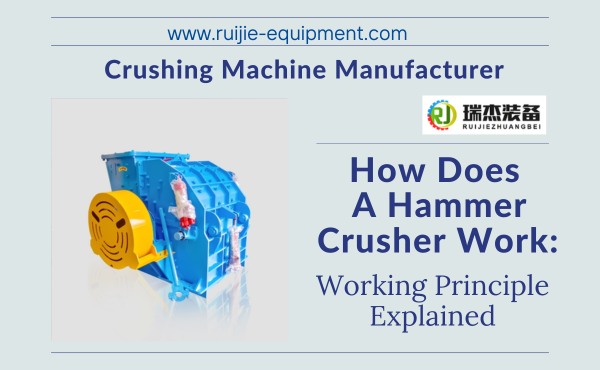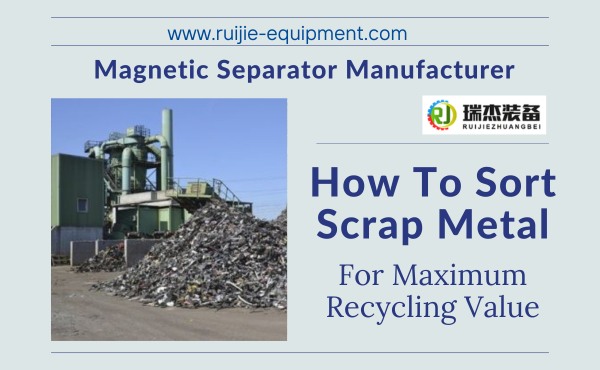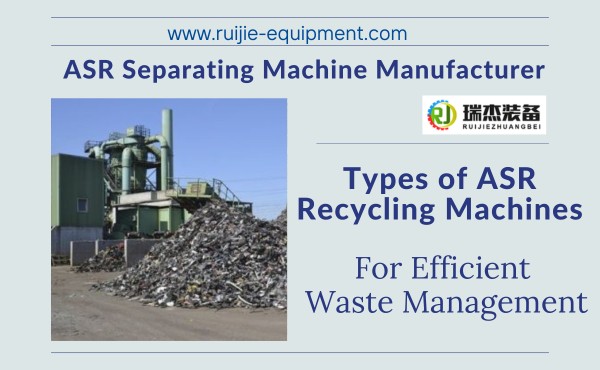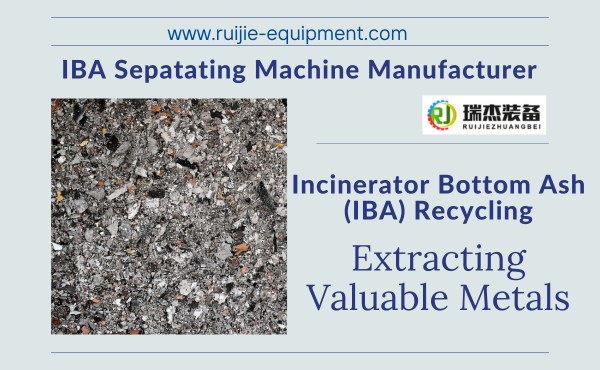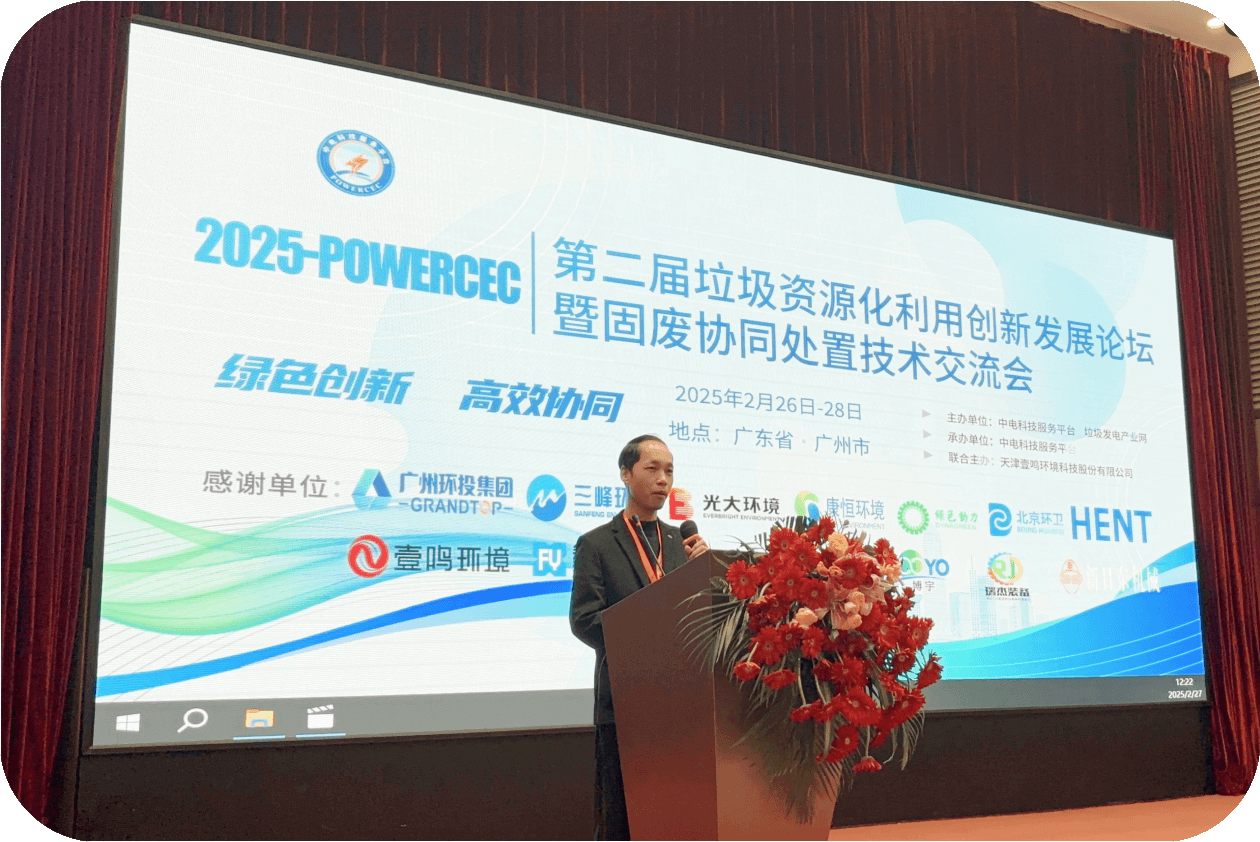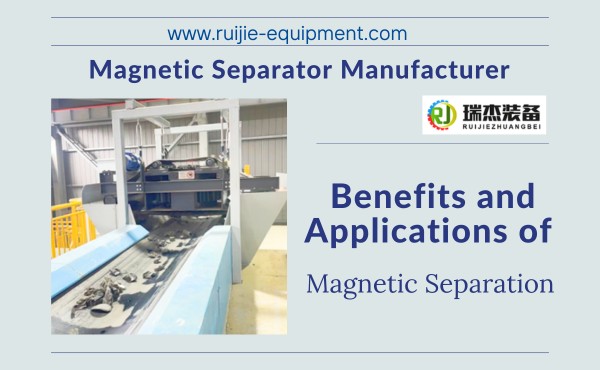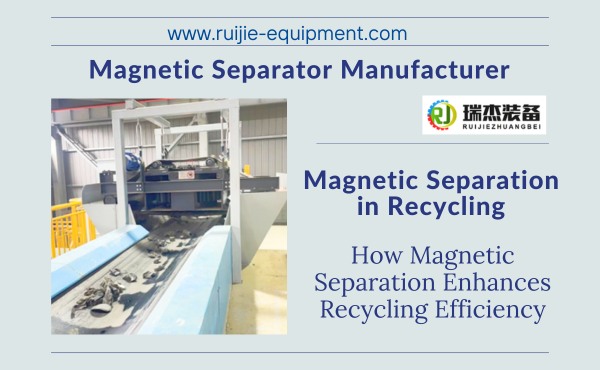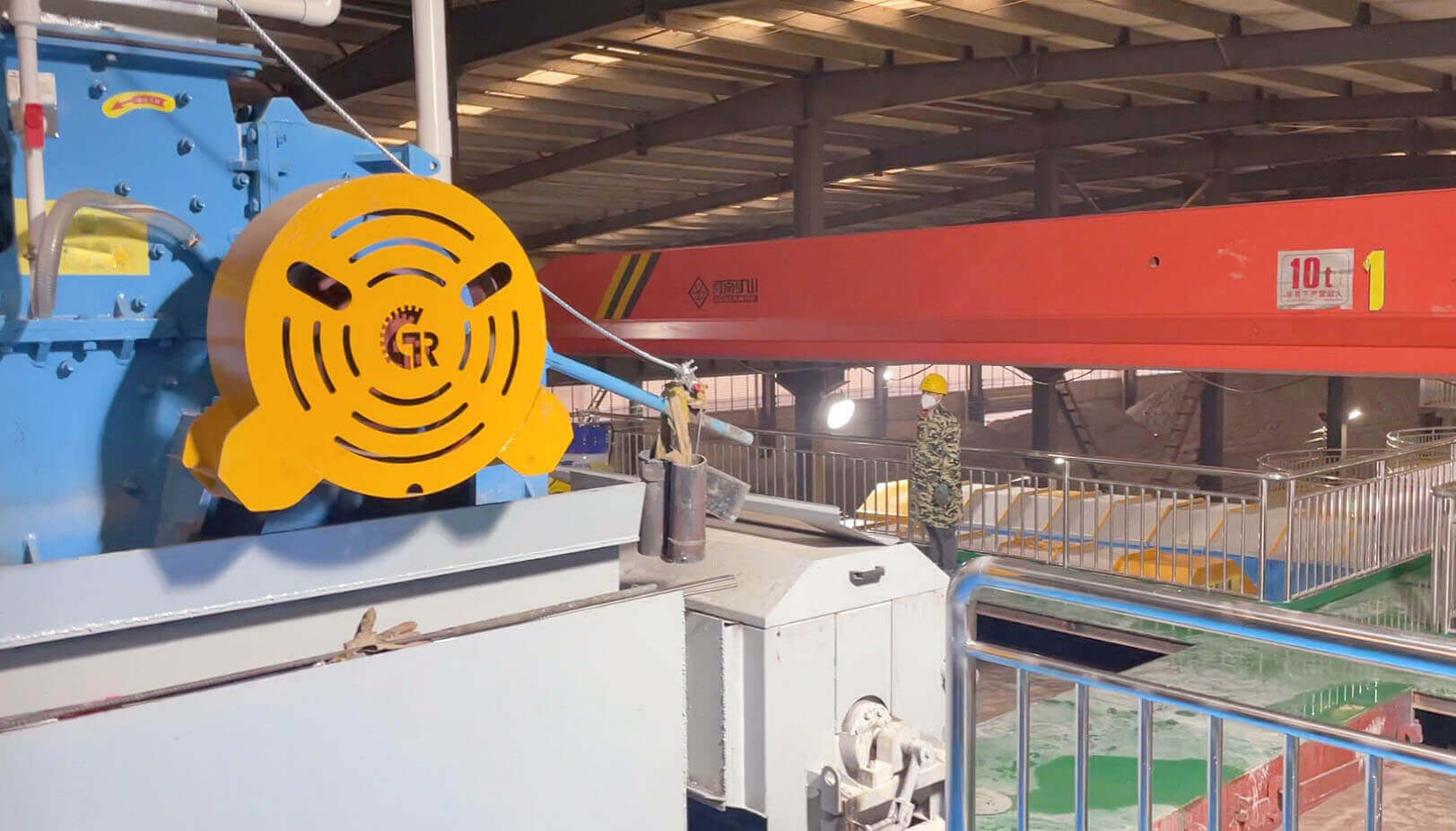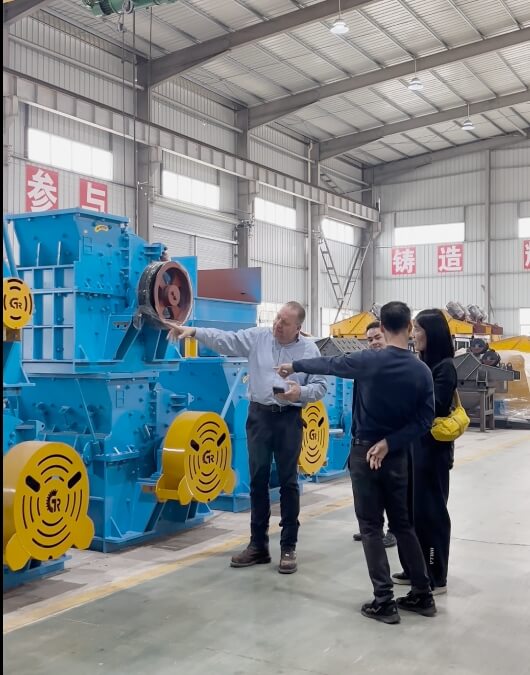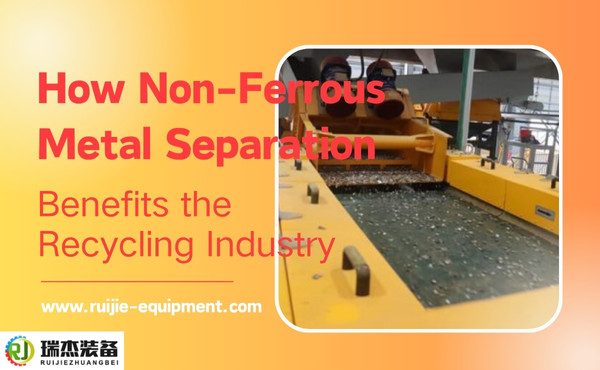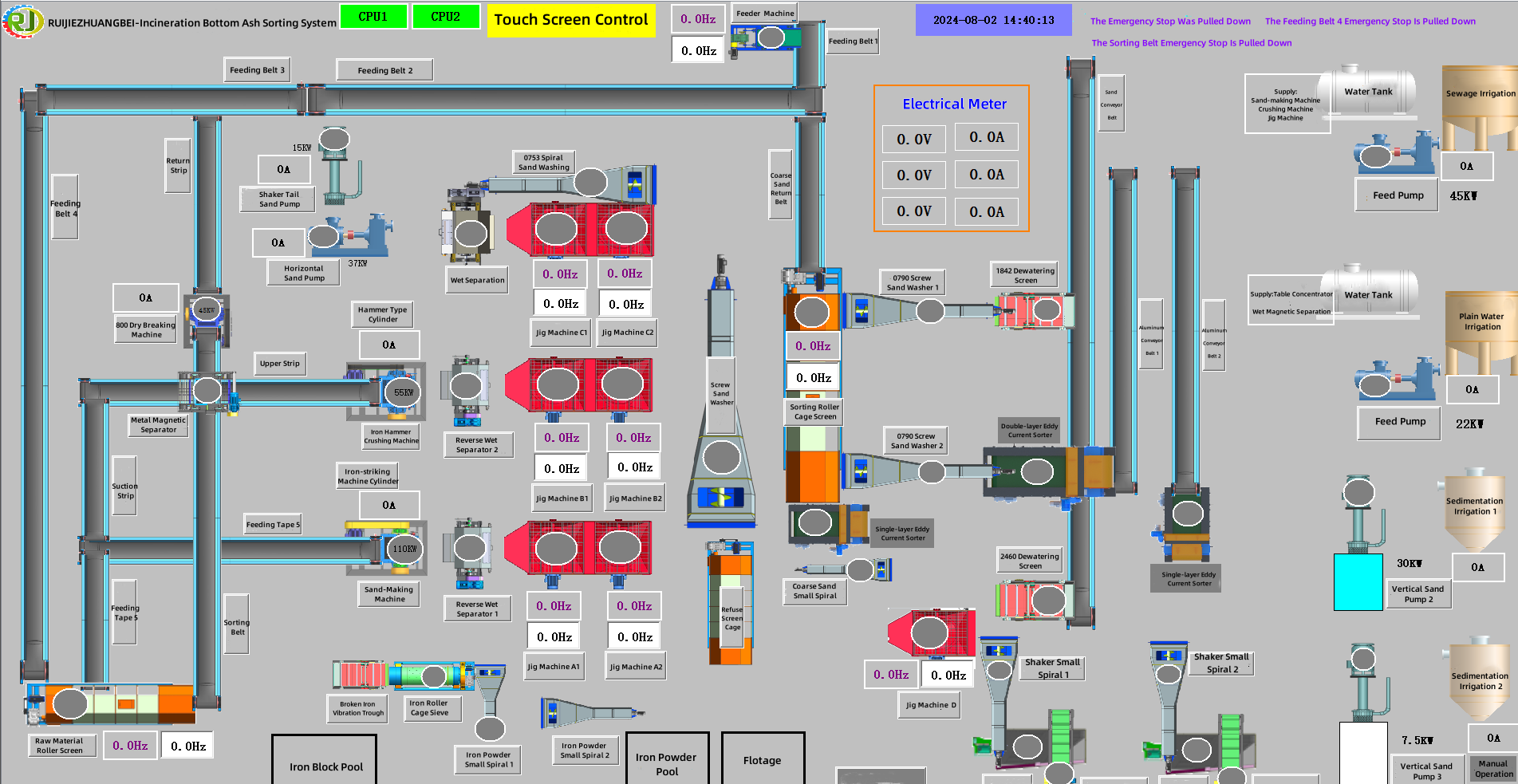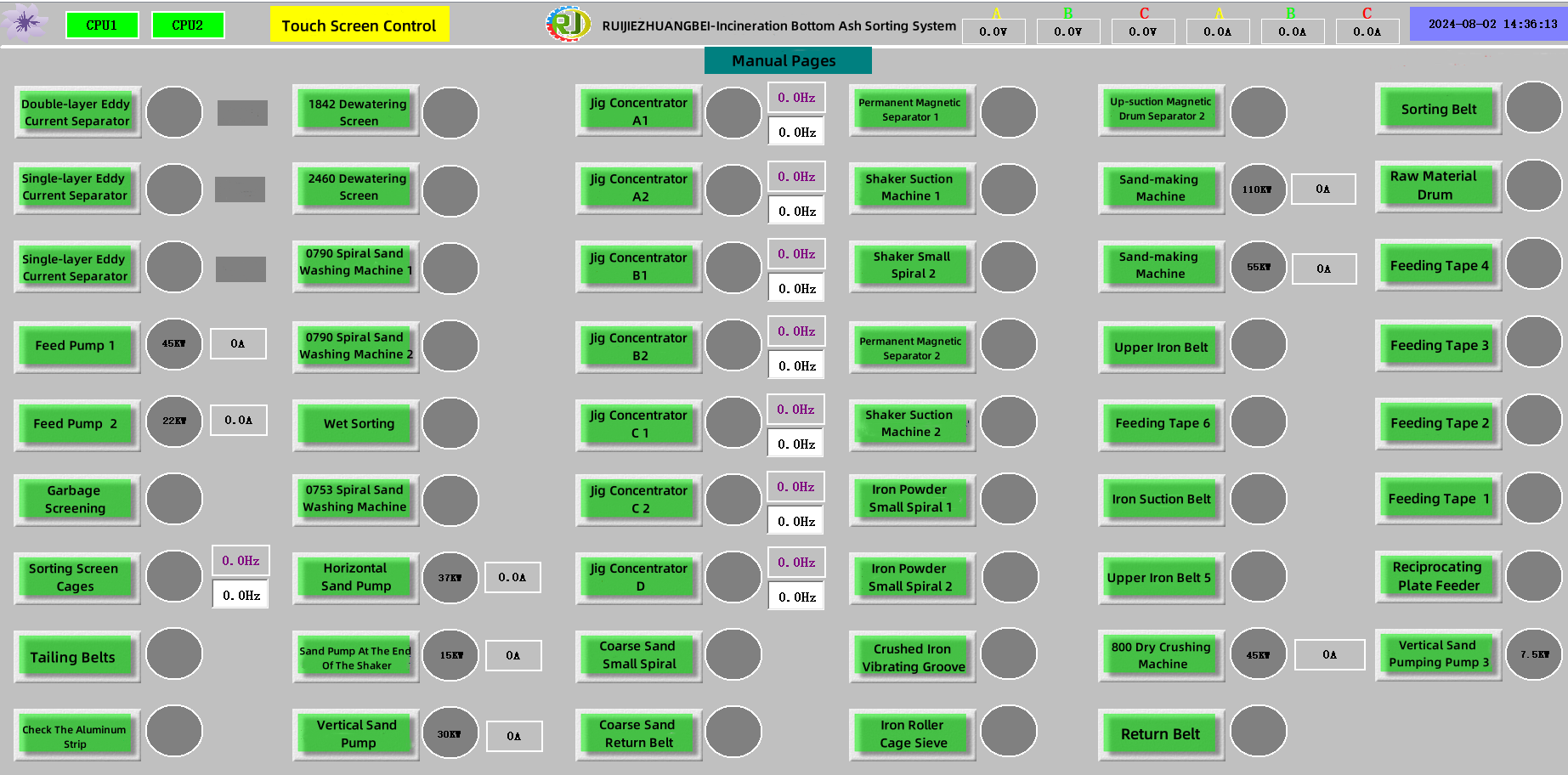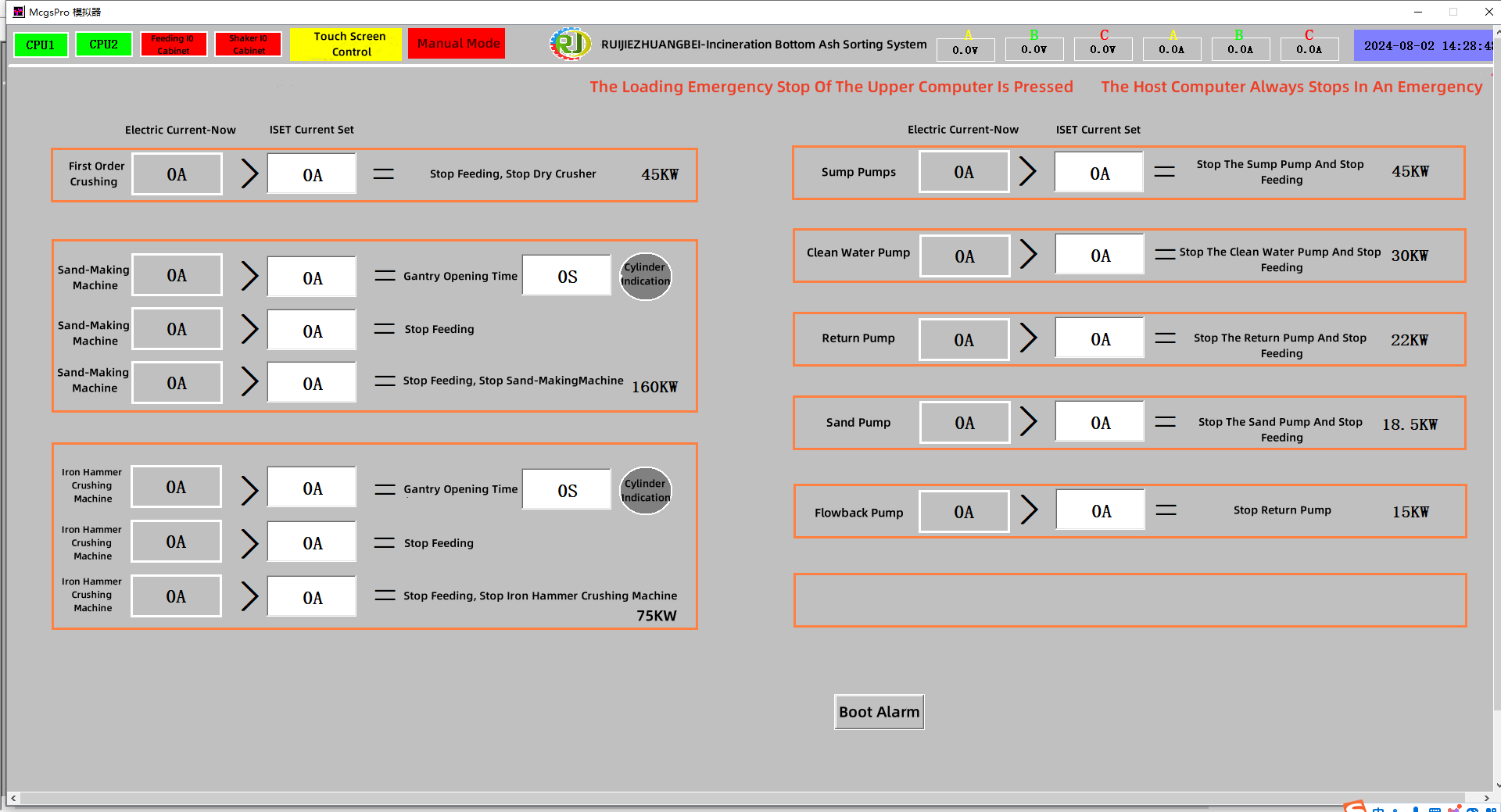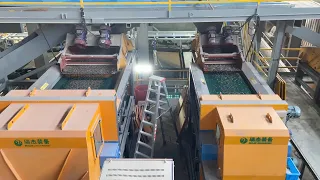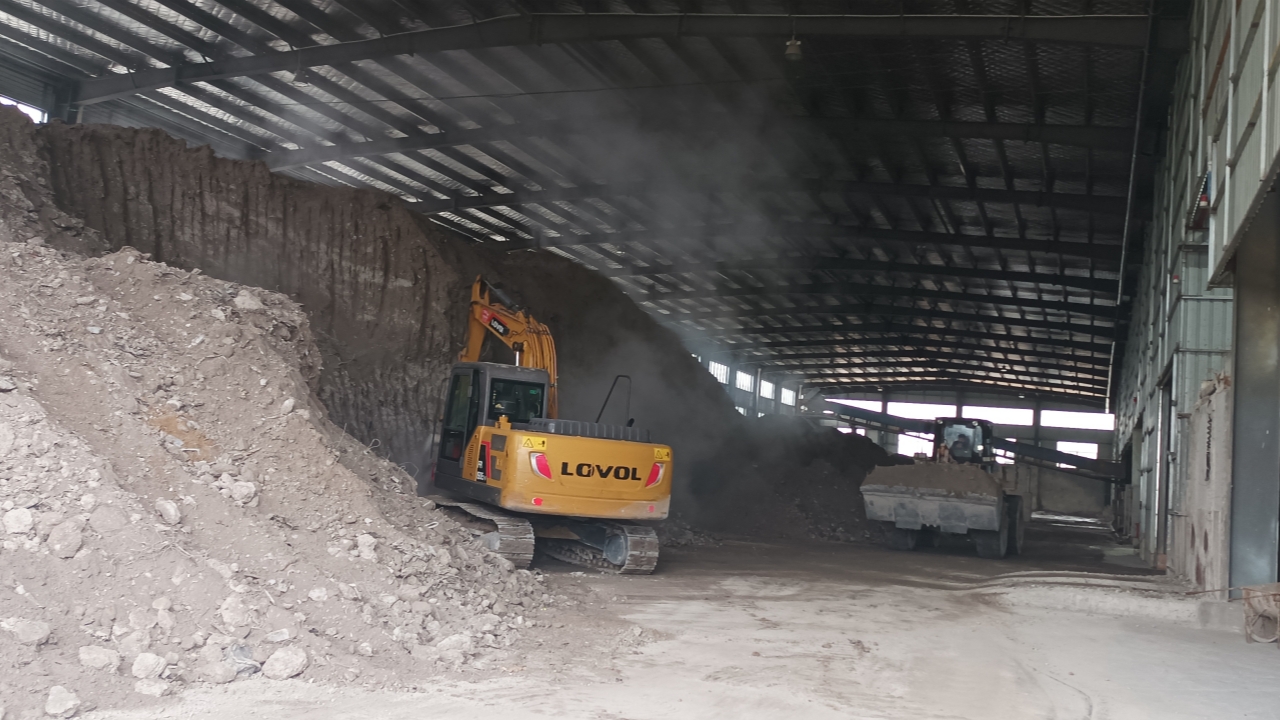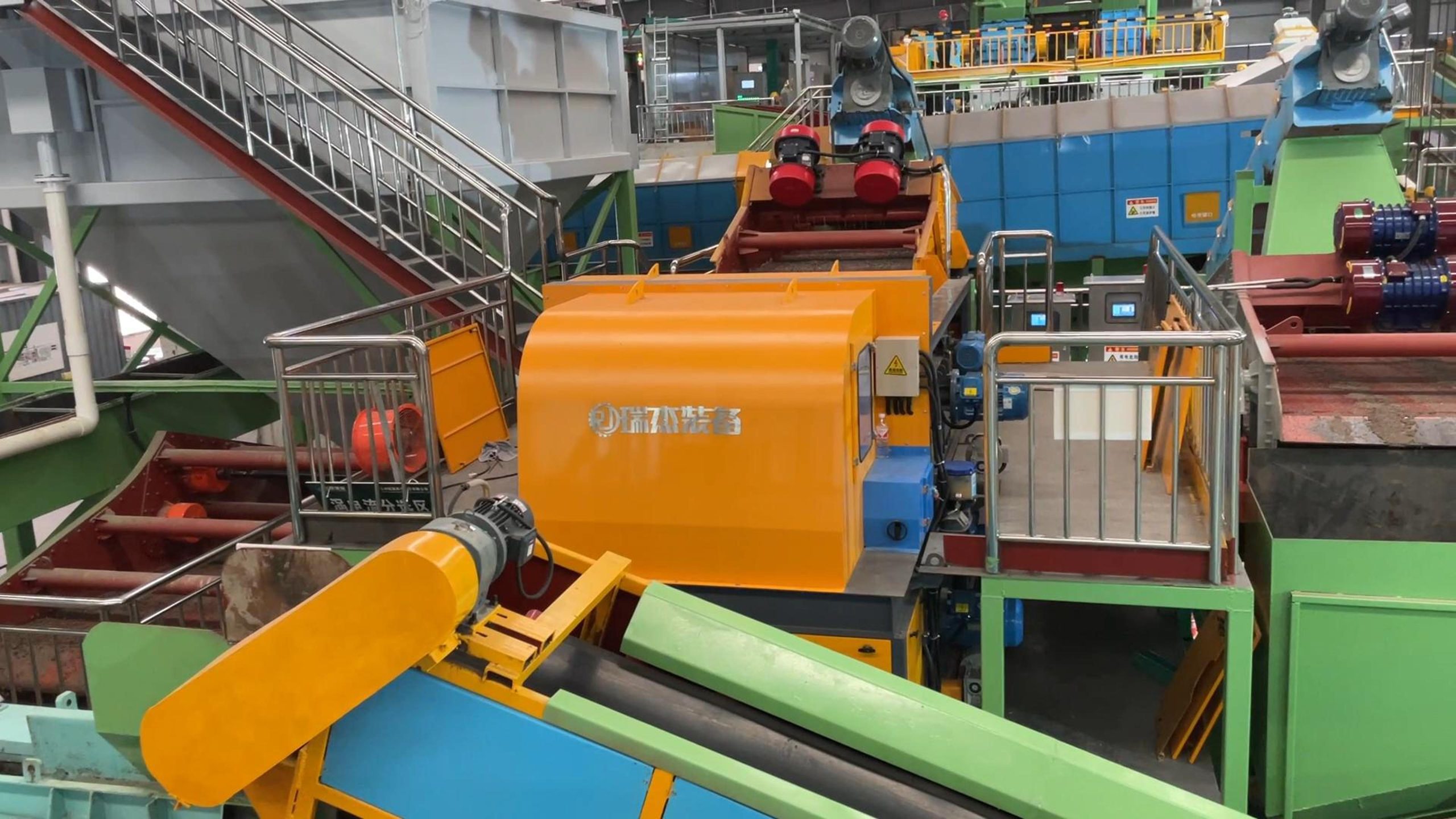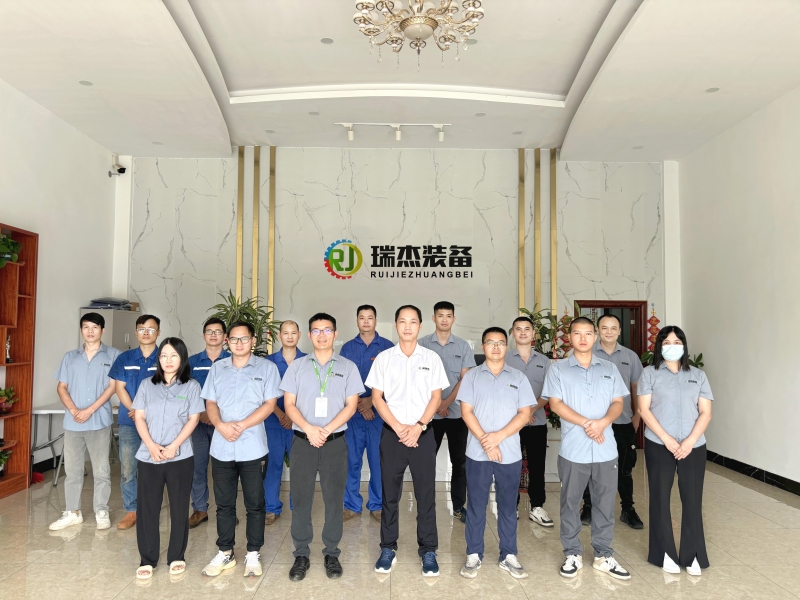Central Control System For Incineration
Bottom Ash Treatment
RUIJIE Central Control System For Incineration Bottom Ash Treatment
The incineration bottom ash treatment central control system is an important system used to control and manage the incineration bottom ash treatment process, which integrates various functions such as automatic control, data processing, remote monitoring, etc., to improve the efficiency, safety and environmental protection of incineration bottom ash treatment.
The following is a detailed description of the central control system for incineration bottom ash treatment:
Overview Of The RUIJIE System
Through the integration of various sensors, actuators, controllers and computer software, the central control system of incineration bottom ash treatment realizes real-time monitoring and precise control of all aspects of the slag treatment process.
The system automatically receives real-time data from the production site, performs rapid processing and analysis, and remotely controls and optimizes the incineration ash treatment equipment according to preset process parameters and control strategies.
RUIJIE System Composition
The central control system for incineration bottom ash treatment is mainly composed of the following parts:
1.Data Acquisition System: Through various sensors installed on the incineration bottom ash treatment equipment, real-time collection of key parameter data such as temperature, pressure, flow, weight, etc.
2.Data Transmission Network: RUIJIE use wired or wireless mode to quickly and accurately transmit the collected data to the central control room.
3.Control and Execution System: According to the received data and the preset control strategy, the incineration bottom ash treatment equipment is remotely controlled through the actuator, such as adjusting the equipment parameters, starting/stopping the equipment, etc.
4.Data Processing and Analysis System: Process and analyze the collected data, extract useful information, and provide data support for optimizing control strategies.
5.Human-machine Interface System:Provide an intuitive and friendly operation interface, which is convenient for operators to monitor the incineration bottom ash (IBA) treatment process in real time and make necessary interventions and adjustments.
RUIJIE System Functions
The RUIJIE incineration bottom ash treatment central control system has the following main functions:
1.Real-time Monitoring:It can display the parameters and status of solid waste incineration bottom ash treatment in real time to help operators fully understand the production situation.
2.Automatic Control:According to the preset process parameters and control strategies, the incineration bottom ash treatment equipment is automatically controlled, which reduces manual intervention and improves production efficiency and stability.
3.Data Analysis: Process and analyze the collected data, extract useful information, and provide data support for optimizing control strategies.
4.Alarm and Fault Diagnosis: When there is an abnormal situation during the treatment of incineration bottom ash (IBA), it can automatically alarm and prompt the cause of the fault, helping the operator to take timely measures to solve the problem.
5.Remote Monitoring:support remote access and control function, so that managers can monitor and manage the incineration bottom ash treatment process at any location.
RUIJIE Application Advantages
The application of the central control system for incineration bottom ash treatment has the following advantages:
1.The system operation interface and the on-site equipment are placed in the same position, which is simple and easy to understand, and can be used without professional personnel.
2.One-key start and stop, reducing manual intervention and waiting time; It has the function of early warning, which can predict whether the production line will be stacked in advance, reducing labor costs and time costs.
3.The system monitors the use of equipment in real time 24 hours a day, and alarms immediately when there is a failure, which can find and deal with abnormal situations in time, avoid accidents, and ensure the safety of production personnel.
4.Through precise control and optimal adjustment, the energy consumption and material consumption in the process of incineration bottom ash treatment are reduced, and the production cost is reduced.
5.The incineration process is strictly controlled and managed, which reduces the emission of pollutants and environmental pollution, and improves the environmental protection level of the enterprise.
6.The PLC adopts Siemens brand, the circuit breaker adopts Schneider brand, and the electrical cabinet adopts 1.5mm stainless steel material + spraying, which is anti-corrosion and moisture-proof, and improves the service life of the equipment.
7.The system supports a variety of communication protocols and interface standards, and can easily access various external devices and sensors to achieve seamless connection with other production systems.
8.The electric cabinet is small and covers a small area, which improves the rational use of the site.
9.Mobile phones and computers and other multi-party devices can be connected to the system, and you can also log in to the system to view the operation of the equipment in other places.
Incineration Bottom Ash Treatment Control System Project Case
Guangxi BeiHai IBA Sorting Plant 1000T/D
Guangxi LuChuan IBA Sorting Pant 650T/D
HuNan LouDi City IBA Sorting Plant 600T/D
Jiangxi JingDeZhen IBA Sorting Plant 350T/D
IBA Sorting Plant Project
FAQ
You may be concerned about whether the system covers comprehensive monitoring and control functions, such as temperature monitoring, automatic adjustment, data recording and analysis, alarm mechanism, etc.
The core functions of the system cover the following key aspects:
1.Regulating Control
- Bottom Ash Treatment Equipment Control: The system can control the speed of the bottom ash conveyor belt, the operation of the mixing device, etc., to optimize the processing efficiency.
2.Data Logging And Analysis
- Data Logging: The system continuously records various parameters in the processing process, including temperature, humidity, throughput, etc. This data can be used to track past operations and optimize future processes.
- Data Analysis: With built-in or external data analysis tools, the system can analyze the collected data to identify trends, predict potential problems, and make recommendations for optimization.
3.Alarm Mechanism
- Abnormal Alarm: The system can detect abnormal conditions in terms of temperature, humidity, equipment operation status, etc., and immediately send out an alarm to remind the operator to take measures.
- Safety Mechanism Triggering: In the event of a serious abnormality, such as overheating or blockage, the system can automatically trigger an emergency shutdown procedure to protect equipment and personnel.
4.Remote Monitoring And Operation
- Remote Access And Control: Through the Internet or a private network, users can remotely monitor the operating status of the system and make adjustments if necessary. This is especially useful in situations where a quick response is required.
Together, these functions ensure the comprehensiveness and efficiency of the central control system for incineration bottom ash, and meet the user’s requirements for safety, stability and environmental protection.
1.High-quality Hardware
- Industrial-grade Equipment:The system uses industrial-grade hardware equipment, which is often able to operate stably in harsh environments such as extreme temperatures, humidity and vibration, with longer service life and lower failure rates.
- Regular Maintenance and Calibration: Regularly maintain and calibrate the sensors, controllers, and other hardware in the system to ensure their accuracy and functional reliability.
2.State-of-the-art Software Architecture
- Fault-tolerant Design: The software architecture of the system should have a fault-tolerant design, which can automatically handle and repair abnormal conditions in the software to reduce the possibility of system downtime.
- Real-time Monitoring and Self-diagnosis: The system can monitor its own operating status in real time, and has a self-diagnosis function, which can detect and solve potential problems in advance.
3.Automate Emergency Response
- Safe Shutdown Procedure: In case of serious problems, the system can automatically execute the safe shutdown procedure to protect equipment and personnel.
4.Continuous Monitoring and Data Analysis
- Real-time status Monitoring: The system provides real-time status monitoring, allowing operators to know the operating status of the system in real time and respond to potential problems in a timely manner.
- Data Analysis and Early Warning: Through the analysis of historical data, the system can predict possible failures and issue early warnings in advance to help prevent problems.
5.Rigorous Testing and Certification
- Factory Testing: Strict testing is carried out before the system leaves the factory, including environmental testing, pressure testing, reliability testing, etc., to ensure that the system can work normally under various conditions.
- Third Party Certification: Certified to international standards (such as ISO, CE, etc.) to ensure that the system meets global standards for reliability and safety.
6.Regular Updates and Maintenance
- Software Updates: Regularly update the software version of the system to fix known vulnerabilities and optimize performance to ensure that the system is always in top condition.
- Hardware Replacement and Opgrade: Periodically replace or upgrade aging hardware devices as required to extend the service life of the system.
7.Technical Support and Training
- Technical Support: Provide technical support to ensure that you can get a quick response and resolution when there is a problem with the system.
- Operator Training: Provide adequate training to operators to ensure they are able to operate the system correctly and respond to emergencies.
Through these measures, the incineration ash control system can achieve a high level of reliability and stability, ensuring long-term stable operation and reducing downtime and maintenance costs.
The ease of use and maintainability of the incineration bottom ash control system is a key factor in ensuring its efficient operation. In order to meet these requirements, we focus on the following aspects in the design and implementation of the system:
1.User-friendly Interface Design
- Graphical Operation Interface: The system uses an intuitive graphical user interface (GUI) to enable operators to easily monitor and control the entire incineration bottom ash treatment process. The interface displays system status and key parameters through clear ICONS, real-time data, and flow charts, reducing operation complexity.
- Multi-language Support: In order to adapt to global users, the system usually provides multi-language interface options, which is convenient for operators with different language backgrounds.
2.Simplified Operational Processes
- One-click Start and Stop: The system design simplifies start and stop operations, and the operator can start or stop the entire system with a simple command, reducing the possibility of human error.
- Automated Operation: The system can automatically run according to preset parameters and rules, reducing the dependence on operators, while improving the efficiency and consistency of the operation.
3.Remote Access and Control
- Mobile Application: The system usually supports mobile access, and the operator can remotely monitor and control the system through a smartphone or tablet computer, which improves the flexibility of operation.
- Remote Monitoring and Support: Through a secure network connection, the technical support team can remotely access the system, providing real-time operational guidance and problem solving, reducing the need for on-site support.
4.Automatic Fault Diagnosis
- Self-monitoring and Diagnosis: The system can automatically monitor its own condition and diagnose potential faults. By analyzing the data in real time, the system can identify problems in advance and recommend specific maintenance measures.
- Intelligent Alarm System: When the system detects an anomaly or potential failure, it will automatically issue an alarm, and provide detailed fault information and suggested solutions to help maintenance personnel quickly respond and deal with the problem.
Through these designs and features, the incineration ash control system not only has a high level of ease of use, but also the maintenance process has become more efficient and predictable, ensuring the long-term stable operation of the system.
We will provide comprehensive technical support and after-sales service to ensure the long-term stable operation of the system and help users solve the problems encountered in the process of use.
The incineration ash central control system is highly compatible and can be seamlessly integrated with existing control systems, enterprise management systems, third-party hardware devices and various software platforms.
This high compatibility allows enterprises to maximize the use of existing resources, while realizing the automation and intelligent upgrade of the system, reducing implementation costs and improving operational efficiency.
Incineration bottom ash control systems are typically very powerful in terms of data processing and analysis of large amounts of data from multiple sources in an efficient and real-time manner.
This capability not only supports real-time monitoring and automated control of the system, but also provides a solid foundation for advanced data analysis, optimized decision-making, and preventive maintenance.
In addition, the system’s data processing capabilities ensure data security, integrity, and availability, enabling it to continue to provide reliable support in complex industrial environments.
Through precise process control, advanced optimization algorithms and effective resource recycling, the incineration ash control system significantly improves energy efficiency and significantly reduces environmental pollution.
This combined benefit not only helps companies reduce operating costs and environmental expenditures, but also supports their environmental compliance and sustainability goals, with significant long-term economic and social benefits.
Yes, incineration bottom ash control systems often support customized solutions to meet the specific needs of different businesses. The ability to customize is the embodiment of system flexibility and adaptability, which can help enterprises achieve optimal performance in a variety of complex operating environments
1.Functional Customization
- Specific Process Flow Support: The system can be customized to the specific process flow of the enterprise, adjusting the control logic, operating flow and parameter Settings to ensure that the system integrates seamlessly with the existing production process of the enterprise.
- User Interface Customization
- Personalized Operation Interface: The system supports customized user interface according to the user’s operation habits and preferences. For example, you can customize the dashboard layout, color scheme, alarm display, etc., to make the operation more intuitive and efficient.
- Multi-language Support: The system can provide multi-language support according to the needs of the enterprise to ensure that operators with different language backgrounds can use the system smoothly.
3.Security & Permissions Customization
- Customized Security Policies: The system security functions can be customized based on enterprise security requirements, including customized user rights management, access control, and data encryption policies, to ensure that system security meets enterprise standards.
- Personalized Permission Settings: The system allows fine-grained customization of user permissions, ensuring that people in different positions can only access and operate parts of the system that are relevant to their responsibilities.
The service life of the incineration bottom ash central control system is usually long, and the hardware equipment can operate stably for 10-15 years, or even longer.
And when it comes to software, regular updates and upgrades ensure that the system remains efficient and modern throughout its lifecycle.
Long-term support services (e.g., 24/7 technical support, long-term maintenance contracts, spare parts supply, etc.) provide a strong guarantee for the continuous operation of the system, reducing operational interruptions and maintenance difficulties.
With these measures, organizations can receive ongoing support throughout the life cycle of the system, ensuring that the system remains relevant to business needs and future-proof.
The incineration ash control system has an excellent performance in global deployment and local support, and can adapt to the market needs and regulatory requirements of different countries and regions.
Through multilingual support, a global technical network, local partnerships, and localized services, the system is able to provide consistent, high-quality support and services to customers around the world, ensuring the successful implementation and operation of the system in different cultural and legal environments.
This global deployment capability and local support services enable the system to meet the specific needs of users in various regions and provide a solid guarantee for the company’s global operations.
The price-performance ratio of the incineration ash control system is reflected in its efficient operation capability, low maintenance requirements and strong scalability.
Although the initial investment is large, the overall price/performance ratio of the system is excellent through significant operating cost reductions, improved environmental benefits, and long-term return on investment.
For companies seeking long-term stability and efficient operations, investing in a central control system for incineration ash is a strategic choice that strikes a good balance between economic benefits and social responsibility.
Recent News
